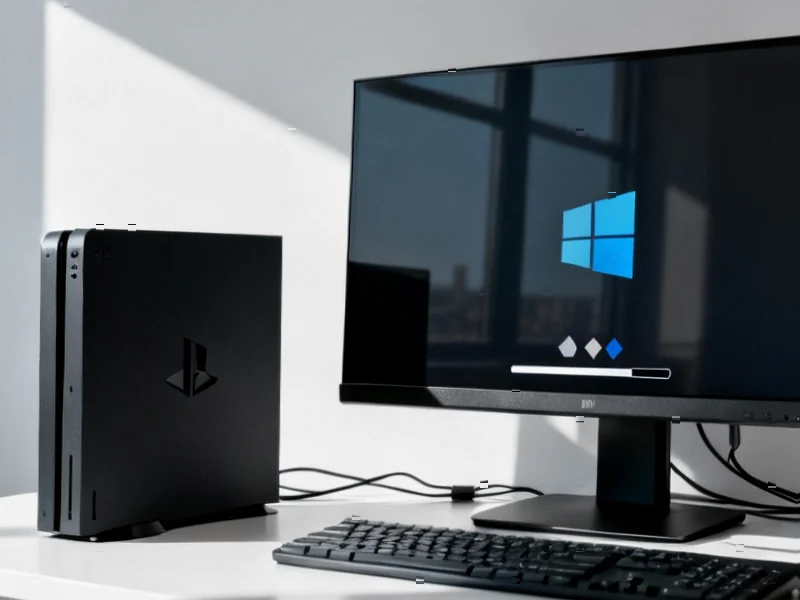According to The How-To Geek, a recent optional Windows 11 update KB5067036 has introduced a peculiar bug causing the Task Manager application to clone itself when users attempt to close it. The issue manifests when users close Task Manager normally, only to have it remain running in the background, creating duplicate instances each time the application is reopened. While the bug only affects some users who installed the October optional update and doesn’t pose security risks, multiple instances could eventually impact system performance if left unchecked. The publication identified a simple command-line solution using “taskkill /im taskmgr.exe /f” to forcibly terminate all Task Manager instances. This unusual behavior highlights how even core system utilities can develop unexpected quirks following updates.
Table of Contents
- The Fragile Nature of Windows Update Quality Control
- Why Core System Utilities Shouldn’t Fail Like This
- The Real-World Consequences of Seemingly Minor Bugs
- What This Reveals About Microsoft’s Development Priorities
- Looking Ahead: Prevention and Mitigation Strategies
- Related Articles You May Find Interesting
The Fragile Nature of Windows Update Quality Control
This Task Manager duplication bug represents a broader pattern in Microsoft’s Windows update strategy that has become increasingly concerning. While labeled as “optional,” updates like KB5067036 still undergo the same quality assurance processes as mandatory patches, yet consistently demonstrate how complex software ecosystems can produce unpredictable edge cases. The selective nature of this bug—affecting only some users with identical update configurations—points to deeper compatibility issues that Microsoft’s testing infrastructure fails to catch. This isn’t an isolated incident; Windows 10 and 11 have seen numerous update-related issues over recent years, from Windows 11 file explorer crashes to Blue Screen of Death triggers following seemingly routine patches. The fundamental challenge lies in Microsoft’s inability to replicate the infinite combination of hardware configurations, software installations, and user behaviors that exist across their billion-plus device ecosystem.
Why Core System Utilities Shouldn’t Fail Like This
What makes this particular bug noteworthy is that it affects Task Manager, one of the most fundamental system monitoring tools in Windows. Task Manager operates at a privileged level within the Windows architecture, with direct access to process management APIs that ordinary applications cannot touch. The fact that it cannot properly terminate its own processes suggests a breakdown in the application’s internal state management or conflict with updated system libraries. In properly architected systems, core utilities like Task Manager should have multiple safeguards against such behavior, including watchdog processes that ensure clean termination. The duplication effect indicates that the application’s main window is detaching from its background process, creating orphaned instances that continue running despite the user interface being closed—a classic programming error that should be caught during basic integration testing.
The Real-World Consequences of Seemingly Minor Bugs
While The How-To Geek correctly notes this bug isn’t catastrophic, the cumulative impact of such issues on user trust and productivity shouldn’t be underestimated. For IT departments managing thousands of personal computers, even minor inconsistencies create support tickets, user confusion, and documentation overhead. The psychological impact on less technical users encountering system utilities behaving erratically can be significant, potentially causing them to avoid using important tools or making unnecessary system changes. Additionally, the resource consumption of multiple Task Manager instances, while minimal individually, could become problematic on systems already under memory pressure or on lower-end devices where every megabyte counts. The command-line solution, while effective for technical users, represents yet another barrier for the average user who expects graphical interfaces to work predictably.
What This Reveals About Microsoft’s Development Priorities
This incident reflects Microsoft’s ongoing struggle to balance feature development with system stability. The KB5067036 update included visible improvements like a revamped Start Menu, suggesting Microsoft’s focus remains on user-facing enhancements rather than foundational reliability. The optional nature of this update functions as an unofficial beta test, with Microsoft essentially crowdsourcing quality assurance from willing users before broader deployment. This approach has become standard practice across the software industry but carries inherent risks when applied to operating systems where stability is paramount. The fact that such bugs can slip through despite Microsoft’s extensive automated testing and internal preview programs indicates fundamental challenges in their development methodology. As Microsoft Windows continues to evolve, the company faces increasing pressure to improve their quality control processes while maintaining aggressive release schedules.
Looking Ahead: Prevention and Mitigation Strategies
For users and administrators, this incident reinforces the importance of delaying non-critical updates until broader community validation occurs. The one-to-two week waiting period that many IT professionals recommend appears increasingly justified as Microsoft’s update quality continues to be inconsistent. From a technical perspective, Microsoft needs to implement better isolation for core system components and more sophisticated state management to prevent such duplication scenarios. The kill command solution, while effective, shouldn’t be necessary for a properly functioning system utility. Looking forward, as Windows continues its transition to more frequent update cycles, both Microsoft and users will need to adapt to this new reality where minor bugs are increasingly common, and having basic troubleshooting skills becomes essential rather than optional for maintaining system reliability.




